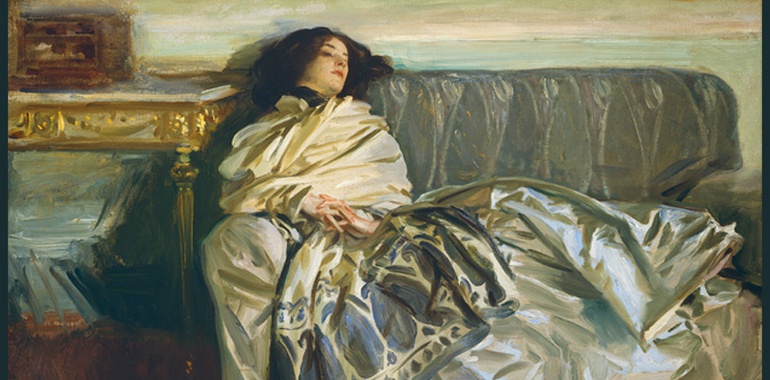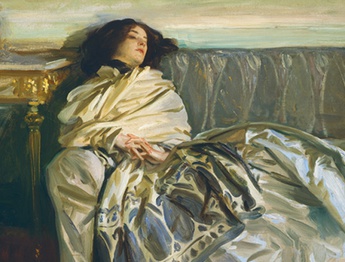_1948.16.1.jpg)
John Singer Sargent, “Nonchaloir (Repose),” 1911, oil on canvas, 25 x 30 in. National Gallery of Art
Sargent's inordinate technical facility, coupled with his ability to portray elegant sitters in sumptuous surroundings, made him extremely popular with wealthy patrons on both sides of the Atlantic. Despite his success as one of the most sought–after portraitists of the late Victorian era, Sargent eventually became exasperated by the whim and vanities of prominent sitters. By 1909 he had abandoned conventional portraiture in order to "experiment with more imaginary fields."
The Woman in Repose is Sargent's niece, Rose–Marie Ormond Michel. In keeping with his newfound preference for informal figure studies, Sargent did not create a traditional portrait; rather, he depicted Rose–Marie as a languid, anonymous figure absorbed in poetic reverie. The reclining woman, casually posed in an atmosphere of elegiac calm and consummate luxury, seems the epitome of nonchalance—the painting's original title. Sargent seems to have been documenting the end of an era, for the lingering aura of fin–de–siècle gentility and elegant indulgence conveyed in Repose would soon be shattered by massive political and social upheaval in the early 20th century.
Finally, the sleeping beauty of Repose is Rose-Marie Ormond (1893-1918), Sargent’s niece and frequent subject. Recognize the pattern of her silk wrap amidst the plush furnishings? Done in 1911, this work represents the luxury and elegance of an era soon to end in the destruction of World War I, which also claimed the life of the sitter.*
But isn’t it best to remember Rose-Marie on a peacetime afternoon, slumbering quietly before her uncle’s admiring eyes?
Rose-Marie Ormond died during the German shelling of Paris in 1918.






































































